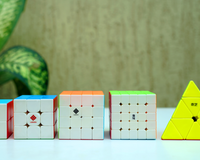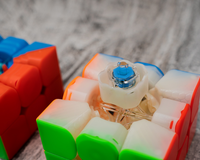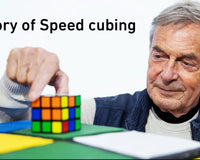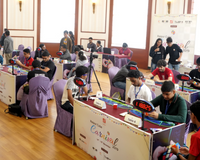What is Muscle Memory?
What is muscle memory? Well, according to the Oxford dictionary, muscle memory is defined as “the ability to reproduce a particular movement without conscious thought, acquired as a result of frequent repetition of that movement”. Put simply, this means that when you do a certain activity repeatedly and consistently, it becomes second nature to you, and you can do it without having to think about it as much.
Also, by the usage of the word ‘ability’ in the definition, what we understand is that muscle memory can be acquired by pretty much anyone. In fact, it is not even restricted to speedcubing! Take typing for example; as you get better at typing and do more of it, you no longer need to look at the keyboard to hit certain alphabets, since your brain has gotten so accustomed to those movements that it can now make you type them without any conscious thought.
Why does it work?
The brain works on the concept of creating neural pathways whenever something new is learned. So, if you decide to learn how to solve a certain step of the Rubik’s cube someday, the brain creates a new pathway that tells your hands what to do and makes the entire task easier on a large scale. The creation of the pathway is done so that when a problem with a similar solution presents itself, the body can react to it from the idea of a solution that has already been implemented.

Now, by repetition, what your brain does is strengthen this pathway. It makes the information that travels through it speed up, hence making the connection even stronger. This connection becomes intrinsic between the mind and the muscles that are being used to perform the task. This mind-muscle connection is what gives us the ability to not have to think about these repetitive tasks anymore.
Analogy in Solving the Rubik’s Cube
While solving a Rubik’s Cube, the method most commonly used is CFOP. So, the steps that involve cases that are easily quantifiable in numbers, such as the OLL and PLL steps, entail a lot of repetition of cases. This repetition means that the algorithm used to solve them is used over and over again. The first time you learn the algorithm, the brain makes the pathway to recognize this case in the future.
As you keep practicing the algorithm and reach the stage where you don’t need to look at it to execute it, the brain has cemented the pathway to the extent where your hands themselves remember the moves, and you have no need to recall the algorithm while doing it. This is the threshold where muscle memory has almost fully taken over, and the brain no longer has a role to play in remembering the exact moves, as it transfers that duty to the muscles in the hands.

Similarly, small triggers such as (R U R’ U’) and (R’ F R F’) are also easily inculcated into muscle memory, and the finger tricks that you learn initially to execute them then become second nature to you. So, any longer algorithms that consist of these triggers will now become easier to execute, since the muscles in your hand have the pattern of execution down for these triggers.
Overall, this provides motivation to speedcubers to learn more algorithms and practice them continually. Upon this continuous practice, they have the belief that the algorithms will turn into muscle memory and not have to constantly be brought up move-by-move in the mind beforehand. In addition to this, the speed of execution of the algorithms increases as they become more second nature since muscle memory doesn’t need the active thought and participation of the brain in recalling the exact algorithm.
Can you rely on muscle memory?
Yes, muscle memory is an inherent feature of human learning behavior and is bound to develop upon continuously doing a certain activity. As long as you are dedicating time and effort towards doing the same thing faster, your muscle memory will do its best to enhance that rate of improvement.
Does this apply to a particular event?
No, muscle memory is applicable in every single event and puzzle as you get faster. It even plays a major role in puzzles that are not algorithm-centric and rely on logic and intuition to solve. This is in the form of triggers as discussed before and also the tendency of the brain to categorize everything into cases and sub-cases even if not initiated. In fact, it applies to so many fields outside of speedcubing, which are out of the scope of this article.
Conclusion
In conclusion, we see that muscle memory is beneficial in increasing the rate of your speedcubing improvement. You can put it to use by repetition of practice and drilling your algorithms day in and day out. By developing adept muscle memory, you free up space in your brain to learn many more algorithms and transfer them to muscle memory eventually as well.
Remember the phrase “Repetition Legitimizes” when implementing this in your speedcubing routine and you will be able to grasp more algorithms in a shorter span of time!
About Author

Akshaansh Chilakapati
Akshaansh Chilakapati is a speedcuber from Hyderabad who specializes in big cubes. He started cubing when he was 15 and has 5 years of cubing experience. He loves to play sports, and music and has a passion for astrophysics. He has attended 20 competitions and won a total of 64 podiums with 16 gold medals. He is also ranked 13th in India for the overall Sum of Ranks (SOR).































1 comment
Ayaan
Super The Cube